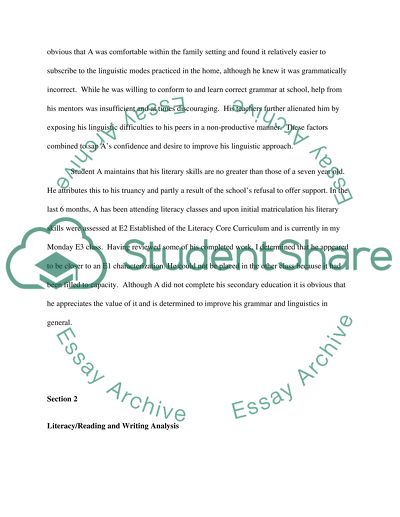Cite this document
(Language and Linguistics: an Adult Learners Reading & Writing Skills Case Study, n.d.)
Language and Linguistics: an Adult Learners Reading & Writing Skills Case Study. Retrieved from https://studentshare.org/english/1555149-language-and-linguistics-case-study-of-an-adult-learners-reading-writing-skills
Language and Linguistics: an Adult Learners Reading & Writing Skills Case Study. Retrieved from https://studentshare.org/english/1555149-language-and-linguistics-case-study-of-an-adult-learners-reading-writing-skills
(Language and Linguistics: An Adult Learners Reading & Writing Skills Case Study)
Language and Linguistics: An Adult Learners Reading & Writing Skills Case Study. https://studentshare.org/english/1555149-language-and-linguistics-case-study-of-an-adult-learners-reading-writing-skills.
Language and Linguistics: An Adult Learners Reading & Writing Skills Case Study. https://studentshare.org/english/1555149-language-and-linguistics-case-study-of-an-adult-learners-reading-writing-skills.
“Language and Linguistics: An Adult Learners Reading & Writing Skills Case Study”. https://studentshare.org/english/1555149-language-and-linguistics-case-study-of-an-adult-learners-reading-writing-skills.


